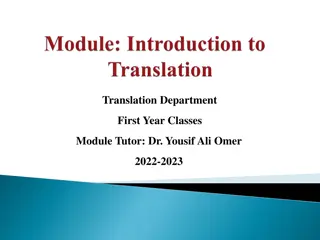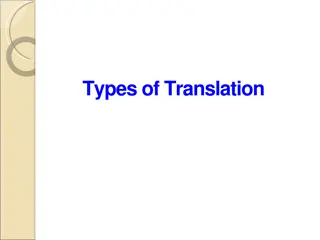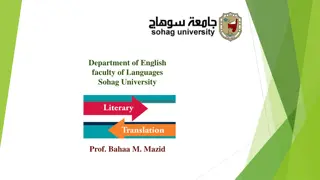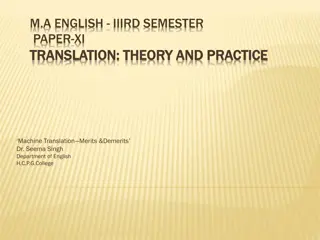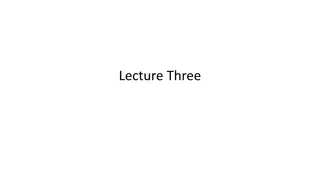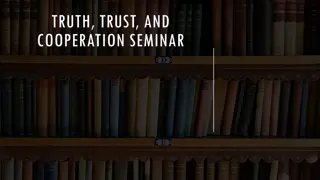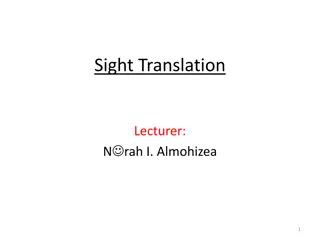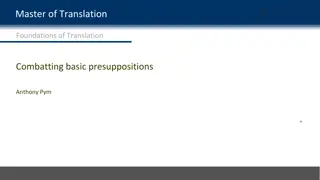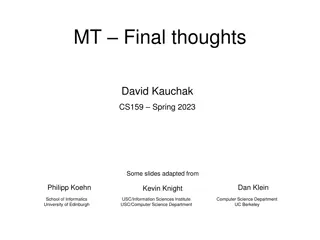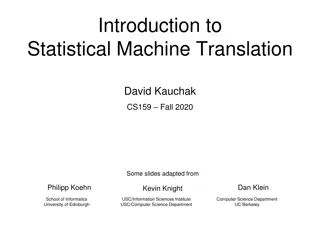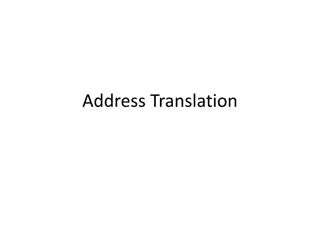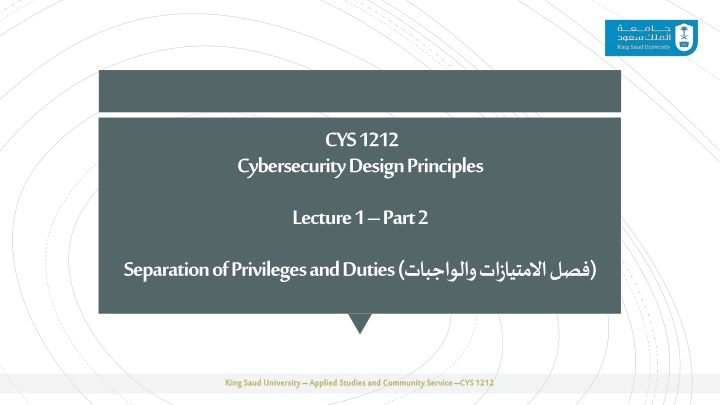
Cybersecurity Design Principles: Separation of Privilege and Duties
Learn about the fundamental principle of separation of privilege and duties in cybersecurity and organizational management, its importance, examples, and objectives. Understand how this principle helps minimize risks of misuse and fraud by distributing tasks and responsibilities among different individuals or roles.
Download Presentation

Please find below an Image/Link to download the presentation.
The content on the website is provided AS IS for your information and personal use only. It may not be sold, licensed, or shared on other websites without obtaining consent from the author. If you encounter any issues during the download, it is possible that the publisher has removed the file from their server.
You are allowed to download the files provided on this website for personal or commercial use, subject to the condition that they are used lawfully. All files are the property of their respective owners.
The content on the website is provided AS IS for your information and personal use only. It may not be sold, licensed, or shared on other websites without obtaining consent from the author.
E N D
Presentation Transcript
CYS 1212 Cybersecurity Design Principles Lecture 1 Part 2 Separation of Privileges and Duties ( ) King Saud University Applied Studies and Community Service CYS 1212
Topics: 1. Principle of Separation between Privilege and Duties ( ). 2. The importance of Separation of Privilege and Duties ( ). 3. Examples : Separation of Privilege and Duties ( : ). King Saud University Applied Studies and Community Service CYS 1212
Objectives Recognition of Separation of Privilege Principle ( ). Importance of Separation of Privilege Principle ( ) King Saud University Applied Studies and Community Service CYS 1212
Separation of Privilege and Duties ( ) " The concept of "separation of privilege and duties" is a fundamental principle in the field of information security and organizational management ( " . " " ). It involves distributing tasks, responsibilities, and access rights among different individuals or roles to minimize the risk of misuse or fraud ( . " ). This separation helps prevent conflicts of interest and ensures a system of checks and balances ( . " ). King Saud University Applied Studies and Community Service CYS 1212
Separation of Privilege and Duties Principle ( " ) " Separation of Privilege is defined as a practice in which multiple privilege " attributes are required to achieve access to a restricted resource ( . " ). The principle of separation of privilege states that a system should not grant " permission based on a single condition ( . " ). " This principle is restrictive because it limits access to system entities ( . " ). King Saud University Applied Studies and Community Service CYS 1212
Separation of Privilege and Duties Principle The principle of separation of duty states that if two or more steps are required to perform a critical function, at least two different people should perform the steps ( . " ). Separation of Duties involves dividing roles and responsibilities to minimize the risk of a single individual subverting a system or critical process without detection ( . " ). According to NIST, separation of duties refers to the principle that no user should be given " enough privileges to misuse the system on their own ( (NIST) ). King Saud University Applied Studies and Community Service CYS 1212
Separation of Privilege and Duties Principle There are several key aspects to consider when discussing the separation of privilege and duties: ( Access Control Least Privilege Principle: Users should be given the minimum level of access or permissions necessary to perform their job functions. This principle helps limit the potential damage that could result from accidental or intentional misuse of privileges. ( Privileges: . ) Job Rotation Rotation of Responsibilities: Periodically rotating job responsibilities among employees can reduce the risk of fraud or unethical behavior. It makes it more difficult for an individual to carry out a malicious activity over an extended period without detection ( . " ). King Saud University Applied Studies and Community Service CYS 1212 " ) . . :
Separation of Privilege and Duties Principle ( Segregation of Duties (SoD) ( SoD Matrix: Identify critical business processes and the associated tasks, then ensure that no single individual has control over all aspects of a particular process. For example, in financial transactions, the person creating an entry should not be the same person responsible for approving it ( . . " ). Dual Control Two-Person Rule: In situations where high levels of security are necessary, the two- person rule requires the involvement of at least two individuals to complete a task or approve a decision. This is often used in contexts such as handling sensitive information or managing critical infrastructure. ( . . SoD) ) : : ) King Saud University Applied Studies and Community Service CYS 1212
Separation of Privilege and Duties Principle Audit Trails Monitoring and Logging: Implementing robust logging and monitoring mechanisms allows organizations to track user activities. Regularly reviewing audit trails can help detect any suspicious or unauthorized actions. ( . . " : ) Role-Based Access Control (RBAC) Access Based on Roles: Define roles within an organization and grant permissions based on these roles. Users are then assigned specific roles according to their job responsibilities, simplifying access management. ( (RBAC) . . " ) : King Saud University Applied Studies and Community Service CYS 1212
Separation of Privilege and Duties Principle Supervision and Oversight Management Review: Establishing a system of supervision and oversight ensures that higher-level management reviews and approves certain actions, especially those with significant impact or risk. ( . ) : Security Awareness Training and Education: Ensuring that employees are aware of security policies and the importance of separation of duties helps in creating a security-conscious culture within the organization ( . ). : King Saud University Applied Studies and Community Service CYS 1212
Duties Examples King Saud University Applied Studies and Community Service CYS 1212
Separation of Privilege and Duties Principle All organizations should consider making Separation of privilege and duties a part of their risk " management strategy for many reasons such as ( : ): 1) Reduce the risk of unauthorized activity or access to operational systems or data ( . ). 2) when a Separation of privilege and duties risk management strategy is in place, it s easy to trace which employee is culpable should a mistake or fraudulent act occur ( . ). King Saud University Applied Studies and Community Service CYS 1212
Example 1:Separation of privilege and duties Principle A good example of this is multifactor user authentication, which requires the use of multiple techniques, such as a password and a smart card, to authorize a " user ( . ). This is used to mitigate the potential damage of a computer security attack. King Saud University Applied Studies and Community Service CYS 1212
Example 2:Separation of privilege and duties Principle The term is also applied to any technique in which a program is divided into parts that are limited to the specific privileges they require in order to perform a specific task ( ). Moving a program from the development system to the production system is an example of a critical function ( . " ). King Saud University Applied Studies and Community Service CYS 1212
Example 2-Cont:Separation of privilege and duties Principle Suppose one of the application programmers made an invalid assumption while developing the program ( . " ). Part of the installation procedure is for the installer to certify that the program works correctly, that is, as required ( . " ' ' ). King Saud University Applied Studies and Community Service CYS 1212
Example 2-Cont:Separation of privilege and duties Principle The error is more likely to be caught if the installer is a different person (or set of people) than ( the developer ( . ) ). Similarly, if the developer wishes to subvert the production data with a corrupt program, the certifier either must not detect the code to do the corruption, or must be in league with the developer ( . ). The developers do not process production data on the development systems ( . " ). King Saud University Applied Studies and Community Service CYS 1212
Example 2-Cont:Separation of privilege and duties Principle Depending on the sensitivity of the data, the developers and testers may receive sanitized production data. Further, the development environment must be as similar as possible to the actual production environment ( . " . ). Logging and auditing are especially important when programs move from the development system to the production system, since the integrity mechanisms typically do not constrain the certifier ( . " ). King Saud University Applied Studies and Community Service CYS 1212
Example 3:Separation of privilege and duties Principle Imagine a small business that sells products online. The industry relies on a single employee with access to the company s online store, payment processing system, and shipping records to process orders. This employee is responsible for authorizing payments, recording transactions, and shipping the products to customers ( . . . " ). However, this arrangement risks fraud and error, as the employee controls the entire order " fulfillment process ( . " ). King Saud University Applied Studies and Community Service CYS 1212
Example 3:Separation of privilege and duties Principle To address this risk, the business decides to implement it by dividing the following tasks into different roles ( : ): Authorization: One employee approves and manages the payment processing system ( . : ). Recording: Another employee records transactions in the company s books and records ( . : ). Custody: A third employee is responsible for managing the inventory and shipping products to customers ( . " : ). King Saud University Applied Studies and Community Service CYS 1212
Example 4 : Separation of privilege and duties Principle On Berkeley-based versions of the UNIX operating system, the program su, which enables users to change from their accounts to the root account, requires two conditions to be met ( UNIX su . ). The first condition is that the user knows the root password ( . " ). King Saud University Applied Studies and Community Service CYS 1212
Example 4 : Separation of privilege and duties Principle The second condition is that the user is in the wheel group (the group with " GID 0). ( wheel ( ) . " 0 ) Meeting either condition is not sufficient to acquire root access; meeting " both conditions is required ( . " ). King Saud University Applied Studies and Community Service CYS 1212
Separation of Privilege and Duties Principle By implementing these principles and practices, organizations can enhance their security posture and reduce the likelihood of internal threats or mistakes leading to security incidents ( . " ). The goal is to create a system where no single individual has too much control or access, minimizing the potential for abuse or errors ( . " ). King Saud University Applied Studies and Community Service CYS 1212
Questions? King Saud University Applied Studies and Community Service CYS 1212
End of Part 1 of Lecture 2 King Saud University Applied Studies and Community Service CYS 1212


